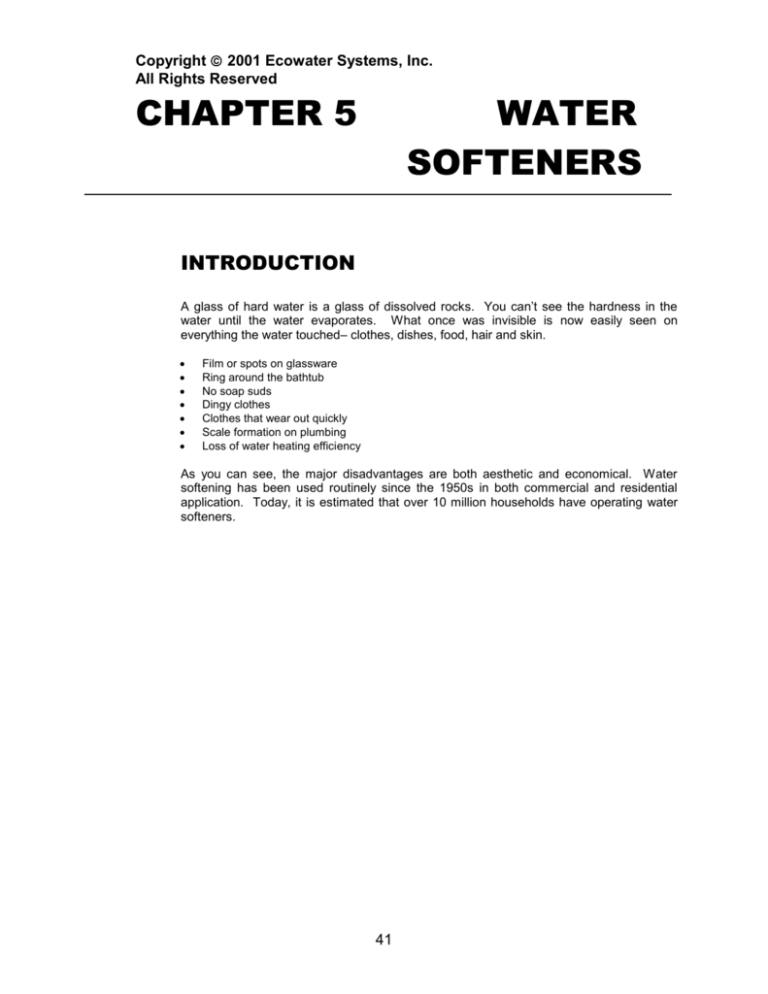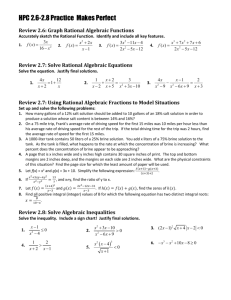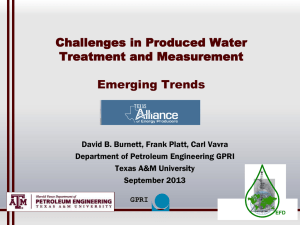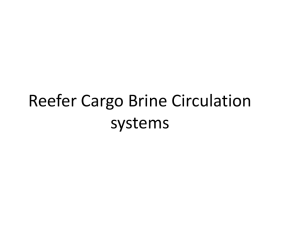
Copyright 2001 Ecowater Systems, Inc.
All Rights Reserved
CHAPTER 5
WATER
SOFTENERS
INTRODUCTION
A glass of hard water is a glass of dissolved rocks. You can’t see the hardness in the
water until the water evaporates. What once was invisible is now easily seen on
everything the water touched– clothes, dishes, food, hair and skin.
Film or spots on glassware
Ring around the bathtub
No soap suds
Dingy clothes
Clothes that wear out quickly
Scale formation on plumbing
Loss of water heating efficiency
As you can see, the major disadvantages are both aesthetic and economical. Water
softening has been used routinely since the 1950s in both commercial and residential
application. Today, it is estimated that over 10 million households have operating water
softeners.
41
SYNOPSIS
A water softener uses a treatment method known as ion exchange to soften water. The
exchange material (cation resin) has a negative charge. The hardness ions (calcium,
magnesium, etc) which are dissolved in the water, have a positive charge. As the water
flows over and through the resin, the hardness ions are drawn to the resin. At the same
time, sodium ions (which have a less positive charge) are knocked off the resin into the
water.
This exchange process occurs billions of times during the softening process. As the
exchange takes place, a hardness band forms in the resin bed. The band expands in the
same direction as the service flow. Eventually, hardness blankets the resin to a point
where it is not capable of exchanging. The resin is considered “exhausted” and any water
passing over the resin remains hard.
Regeneration must occur to revive the resin. A brine solution is introduced into the
mineral tank. Brine solution can be either sodium or potassium salt dissolved with water.
The brine solution is rich in sodium or potassium ions and will exchange off the hardness
ions. The hardness ions and unused brine solution is rinsed down the drain. The resin is
backwashed and rinsed to complete the regeneration process.
42
DOWN-FLOW VS UP-FLOW BRINING
DOWN-FLOW (CO-CURRENT) BRINING
The service water flow is downward over, around and through the resin. A hardness band
will gradually form and move downward through the resin. When regeneration occurs, the
brine solution also flows downward.
In this method, the brine solution must pass through feed water diluting the brine in the
beginning of the regeneration cycle. Also, at lower brining levels, some of the resin bed
may not be fully regenerated leaving a layer of resin that can permit hardness bleed.
Downward Service Flow results in resin exhaustion occurring from the top down.
Downward Brine Flow pushes hardness band through regenerated resin resulting in high
water usage.
During regeneration cycle, Fill cycle is last resulting in poor salt efficiency.
43
UP-FLOW (COUNTER CURRENT) BRINING
The service water flow is downward over, around and through the resin. But the brine
solution flow is the opposite way – UP.
In this method, there is no feed water to break through, so the bottom of the resin bed
gets a non-diluted brine solution. When the softener returns to Service, the water leaving
the tank will last pass through the most highly regenerated section of the resin with no
hardness bleed.
Downward Service Flow resulting in resin exhaustion occurring from the top down.
Upward Brine Flow resulting in brine passing through regenerated resin first before pushing
hardness band to drain resulting in low water usage.
Fill is first stage in regeneration cycle resulting in maximum salt efficiency.
44
RESIDENTIAL SIZING GUIDE
Water hardness and water usage dictates how often the softener will need to be
regenerated and how much salt will be required. (See Grain Capacity formula). The water
hardness is usually determined by chemical analysis. Water usage, if unknown maybe
estimated by using a universal average of eighty (80) gallons per person per day.
GRAIN CAPACITY & SALT ESTIMATION FORMULA
STEP 1--
STEP 1 -ESTIMATED HARDNESS
For every ppm of iron multiply by five (5).
Add to total hardness gpg to total an estimated
hardness setting.
__________ ppm x 5 = ______________
Iron
Total Iron
________ + ________
Total
Total
Iron
Hardness
= ____________
Estimated
Hardness
Setting
EXAMPLE –
EXAMPLE –
If water has three (3) ppm iron and hardness of
10 gpg. Add fifteen (15) grains to the 10 gpg of
hardness to total an estimated hardness of 25.
3 ppm x 5 = 15
+ 10
25 gpg est. hardness
STEP 2-TOTAL DAILY WATER USAGE
STEP 2 --
Multiply the number of persons in the
household by eighty (80), giving you the total
daily water usage.
___________ x 80 = __________
Number of
Total daily
persons in
water usage
household
(gallons)
EXAMPLE –
EXAMPLE –
If there are 4 people in the household
4 x 80 = 320
STEP 3 -EST. DAILY CAPACITY NEEDED
STEP 3 --
Multiply the total daily water usage by
Estimated Hardness Setting
__________ x _________ = ___________
Total daily
Estimated
Daily Capacity
water usage) Hardness
(gallons)
EXAMPLE –
EXAMPLE --
If total daily water usage is 320 and estimated
hardness is 25.
320
STEP 4 -APPROXIMATE UNIT SIZE
STEP 4 --
x 25 = 8000
Multiply the Daily Capacity by the efficiency
factor of four (4) to acquire the approximate
capacity size needed for application.
____________ x (4) = _____________
Daily Capacity
Approximate
Unit Size
Per Capacity
EXAMPLE –
EXAMPLE --
If Daily Capacity is 8000 grains
8000 x 4 = 32,000 grains needed
45
PARTS OF A WATER SOFTENER
1.
Nozzle/Venturi Assembly -- Consists of Screen, Venturi, Gasket and Fill Flow Plug.
2.
Main Valve -- Consists of the Timer, Motor, Cam and Gear, Microswitch, Rotor and
Disc, Metering Assembly (demand units only).
3.
Top Distributor -- Disperses even water flow during service and regeneration, inhibits
resin from escaping to the inlet side of valve during backwash and filters service
water.
4.
Riser Pipe -- Transports water from bottom distributor to valve.
5.
Resin Tank -- Holds resin media.
6.
Resin -- Ion exchange media.
7.
Bottom Distributor -- Disperses backwash flow and inhibits resin from escaping to the
outlet of valve.
8.
Salt – Regenerant for resin usually sodium or potassium chloride.
9.
Brine Valve Assembly -- Consists of Brine Tube, Air Check Float Assembly and
Safety Shutoff.
10. Brine Well -- Container for the Brine Valve Assembly.
11. Brine Tank -- Receptacle for salt.
.
46
TIMERS
The timer energizes the drive motor which turns the cam and gear. A microswitch rides
on the cam sending signals to the timer indicating the disc position inside the valve.
There are different types of timers used on the water softener valves --
MECHANICAL
A Mechanical timer uses a series of gears and pins to determine regeneration usually
from one (1) to seven (7) days. Also, fill is determined by the brine valve float setting.
SOLID STATE
A Solid State timer has an electronic control, LCD display and 5 buttons. Regeneration
days and fill time are determined by the user and programmed into the faceplate.
ELECTRONIC DEMAND
An Electronic Demand timer has an electronic control, LCD or dot-matrix display, a series
of buttons and a turbine assembly. The turbine assembly meters water usage. Hardness
setting and regeneration time is programmable. The amount of water used and the
hardness setting determine regeneration days.
47
METERING ASSEMBLY
The metering assembly located in the outlet of the valve body, consists of –
1)
2)
3)
Sensor Housing
Turbine
Support
¾” Single Rotor Disc Valve
1” Single Rotor Valve
The Sensor Housing is a small electronic circuit board that fits into a dry well located in
the outlet of the valve body and connects to the electronic demand timer by the wiring
harness. As the water flows to service the house lines, the turbine spins on the turbine
support located in the outlet. There are two (2) small, round magnets located in the
turbine. As the turbine spins, the magnets pass the sensor housing which counts the
revolutions of the magnets and transfers the meter count information to the timer. The
timer computes the meter count into gallons and uses the information to calculate
capacity
and
forecast
upcoming
water
usage.
48
BRINE VALVE ASSEMBLY
The brine assembly is protected by the brinewell and is located in the brine tank (salt
storage area). The brine valve assembly consists of -1)
2)
3)
4)
5)
6)
7)
Tubing
Float Stop
Float
Float Seal
Float Rod and Stem
Guide Cap
Lower Seal
Fill water is transported into the salt tank through the brine assembly tubing (1). To
prevent brine tank overflow, the float (3) will push upward against the float stop (2). The
float stop lifts the float rod and stem (5) until the lower seal (7) seats against the guide
cap (6) sealing the passage for fill water.
Brine draw is when suction created by the Nozzle/Venturi draws brine solution from the
brine tank. The float riding the brine solution, holds the float seal (4)up until the brine
solution is level with the guide cap opening. The float seal covers the opening signaling
brine rinse has started. The float seal prevents the induction of air into the resin tank
assembly.
NOZZLE/VENTURI ASSEMBLY
49
The Nozzle/Venturi must function properly for the fill and brine cycles to occur. It
consist of –
1)
2)
3)
4)
5)
Cap
O-ring
Screen Support
Cone Screen
Nozzle/Venturi
6)
7)
8)
9)
10)
Brine Flow Plug
Gasket
Fill Flow Plug
Fill Screen
Venturi Housing
The Nozzle/Venturi serves three purposes –
regulate fill water
create suction for brine draw
control brine rate
The Fill Flow Plug regulates how fast fill water enters the brine tank. Too much water
could lead to excessive salt consumption or salty water after regeneration. Too little
water could lead to reduced capacity or resin fouling.
A small amount of water is pushed through the bottom port of the venturi housing and is
directed up to the cap. The water sifts through the screen, down the nozzle/venturi
assembly. The nozzle accelerates the speed of the water forcing it into the venturi
causing suction. The gasket then seals against the bottom of the venturi assembly.
Brine is drawn up the brine tubing, over the fill flow plug and through the middle hole of
gasket. It mixes with the feed water and is directed through the top port of the venturi
housing to the valve.
The Brine flow plug located on the Nozzle/Venturi assembly restricts the brine rate. The
brine flows through the top port of the venturi housing, back into the valve and down the
riser pipe. Brine moves slowly upward through the resin to the drain keeping the resin
bed tight.
VALVE ASSEMBLY
50
SINGLE DISC ROTOR VALVE - ¾” AND 1”
The single disc rotor valve assembly consists of –
1)
2)
3)
4)
5)
6)
Drive Motor
Position Switch
Cam and Gear
Valve Cover
Drain Flow Plug
Drain Nozzle
7)
8)
9)
10)
11)
¾” Valve
Rotor and Disc
Rotor Seal
Nozzle/Venturi Seal
Drain Seal
Valve Body
1” Valve
The timer energizes the drive motor that turns the cam and gear. The position switch
opens and closes as it drops into the notches of the cam. The switch signals to the timer
what regeneration cycle the softener is in. The cam and gear turns the rotor and disc
that directs the water. The rotor and disc rides on the rotor seal and ware strip, the
nozzle/venturi seal and the drain seal. The drain flow plug restricts the backwash and
fast rinse flow to drain and is located in the drain nozzle.
51
OPERATION
The basic operation of a water softener consists of service and regeneration.
Service is the process of hard water passing over and through the resin bed exchanging
hardness for soft water.
Regeneration is the process of brine passing over and through the resin bed restoring it’s
exchange capabilities.
Regeneration consists of five (5) stages or cycles S
F
BR
BW
R
Service
Fill
Brine and Brine Rinse
Backwash
Fast Rinse
The letters listed above are etched into the top of the cam allowing the disc position to be
recognized.
Single Rotor Disc Valve - ¾”
52
SERVICE
WHAT HAPPENS 1.
2.
3.
4.
Valve is in the (S) SERVICE* position.
Hard water enters the softener from the inlet and flows through the top distributor
and over the resin.
Hard water is ion exchanged as it passes over the resin.
Soft water flows through the bottom distributor up the riser tube and out the
outlet.
WHAT TO LOOK FOR
No discharge of water at drain.
No water into the brine tank.
Motor not energized.
Water line in brine tank is approximately 2”.
NOTE – A pressure drop across the softener will occur in SERVICE position when water is used.
Valve construction, tank diameter, resin (mesh) size and internal plumbing affect the drop across
the system. Also any foreign material fouling the resin will increase the pressure drop. WQA
validated softener shall not exceed 15 psi at the rated service flow.
REGENERATION
FILL CYCLE
WHAT HAPPENS 1.
2.
3.
4.
5.
6.
7.
8.
The timer energizes the motor turning the disc out of SERVICE and into the FILL
position.
Hard water enters the valve inlet and flows down through the Top Distributor
Water is ion exchanged by resin.
Soft water flows through the Bottom Distributor and up the Riser Tube.
The valve opens a passage allowing the soft fill water to flow through the
Nozzle/Venturi.
The rate of water flow into the brine tank is controlled by the size of the Fill Flow
Plug located in the Nozzle/Venturi.
The Brine Assembly then directs the fill water into the Brine (salt storage) Tank.
The fill water mixes with the salt making brine for regeneration.
WHAT TO LOOK FOR
Fill cycle is approximately eight to twelve (8 -12) minutes.
No discharge of water at drain.
Steady trickle of water from brine assembly.
Water in brine tank rises from 2” to 10”.
Soft water is available at faucets.
NOTE - Approximately 2.8 LB of salt will be dissolved per each gallon of water added.
53
BRINE/BRINE RINSE CYCLE
WHAT HAPPENS BRINE
1.
2.
3.
4.
5.
The timer energizes the motor moving the disc out of the FILL and into BRINE and
BRINE RINSE position.
Hard water enters the valve and travels over to the bottom port of the nozzle/venturi.
Flow through the nozzle/venturi creates a vacuum in the brine valve assembly.
The vacuum draws the brine solution up from the brine tank to the nozzle/venturi.
Brine and water flows across the valve, down the riser tube, though the bottom
distributor to the resin.
Brine flow is restricted to the lowest possible rate providing extended brine/resin
contact time and no resin bed expansion.
BRINE RINSE
1.
2.
3.
When all but 2” of brine solution is drawn from the brine tank, the brine valve float
seats to prevent air induction signaling brine rinse is beginning.
Water continues to flow in the same direction except for the discontinued brine flow.
Hardness minerals and brine rinse from the resin bed and flow to the drain.
WHAT TO LOOK FOR
Brining and brine rinse is approximately eighty (80) minutes.
Slow, steady drop in brine solution.
Slow, steady discharge of water at drain.
Vacuum at the Brine Assembly and Nozzle/Venturi
Hard water is available at the faucets.
NOTE - Avoid using HOT water during regeneration since the water heater will refill with hard
water.
BACKWASH CYCLE
WHAT HAPPENS 1.
2.
3.
4.
5.
6.
7.
The timer energizes the motor moving the disc out of BRINE and into BACKWASH
position.
Length of backwash is determined by the square footage of resin bed.
The disc routes hard water down the riser tube and bottom distributor.
The backwash flow control, located in the outlet disc, regulates the amount of water
flow out the drain while in backwash.
The faster, upward flow of water lifts and expands the resin flushing the remaining
hardness minerals, brine, dirt, sediment, iron deposits, etc., to the drain.
The top distributor retains the resin within the mineral tank.
While in backwash, the top distributor contents are flushed to the drain.
WHAT TO LOOK FOR
Backwash is approximately ten (10) minutes.
Fast, steady discharge of water at drain.
No water flow at Nozzle/Venturi.
Hard water is available to faucets.
54
NOTE - A clear drain and good water pressure is critical to the backwashing cycle.
SECOND BACKWASH OR HEAVY BACKWASH
Backwash options may be offered on the softener to help maintain the resin bed if the
water contains high iron or sediment.
SECOND BACKWASH - Allows the valve to backwash one (1) time before brining and
then again one (1) time after brining.
1. Fill
2. Backwash
3. Fast Rinse
4. Brine
5. Backwash
6. Fast Rinse
HEAVY BACKWASH - Extends the backwash cycle from the usual 7 minutes to 10
minutes.
FAST RINSE CYCLE
WHAT HAPPENS 1.
2.
3.
4.
5.
6.
The timer energizes the motor moving the disc out of BACKWASH and into the FAST
RINSE position.
Hard water changes direction to flow down through the resin, repacking the bed
which reduces the chances of channeling during service flow.
The fast rinse flow washer located in the valve drain fitting, controls the fast rinse flow
rate.
Any brine, hardness minerals, iron flock etc., still at the bottom of the resin bed, are
flushed up the riser tube and out the valve to the drain.
The timer again advances the disc to the SERVICE position.
The valve remains in SERVICE until the timer imitates the next regeneration.
WHAT TO LOOK FOR
Fast rinse is approximately six to eleven (6 – 11) minutes with a dwelling period of two (2)
minutes separating backwash from fast rinse.
Fast, steady discharge of water to drain.
Soft water is available at faucets.
55
WATER FLOW CHART
56
FREEBOARD
Freeboard is the distance between the top of the tank and the top of the resin. This gap
is important to ensure removal of iron and sediment during the backwash cycle. The resin
is allowed to expand, becomes turbulent and admits water to flow around and through the
resin beads carrying off sediment.
Freeboard is expressed as a percentage of volume above bed height for a given tank.
One hundred (100) percent freeboard identifies a tank with the same empty volume as
bed depth, allowing one hundred (100) percent bed expansion or displacement. Most
water softeners will be filled to two thirds (2/3) of the total tank height and allows for fifty
(50) percent expansion of the resin.
57
NOTES
58
EXERCISE
1. The difference between co-current and counter-current is the way the brine enters the
resin tank?
True or False
2. The riser pipe serves as a transport/separation tube for treated and untreated water?
True or False
3. Which part listed below determines how much water is being used?
A. Float
B. Drain Flow Plug
C. Sensor Housing
D. Bottom Distributor
4. Which part listed below regulates how fast water enters the brine tank?
A. Nozzle/Venturi
B. Gasket
C. Fill Flow Plug
D. Timer
5. What are the cycles of regeneration as they happen –
A. Backwash, Brine, Fast Rinse, Fill
B. Fill, Backwash, Fast Rinse, Brine
C. Fill, Brine, Backwash, Fast Rinse
D. Fast Rinse, Fill, Brine, Backwash
6. How much salt is dissolved per gallon of salt?
A. 5.2 pounds
C. 8.2 pounds
B. 2.5 pounds
D. 2.8 pounds
7. If second backwash is programmed on, what are the cycles of regenerations as they
happen?
A. Service, Fill, Brine, Backwash, Fast Rinse, Backwash, Fast Rinse
B. Service, Fill, Backwash, Fast Rinse, Brine, Backwash, Fast Rinse
8. How much water is left in the brine tank after a regeneration?
A. 2”
B. 4”
C. 6”
D. 8”
9. Water that enters the salt tank during Fill cycle is soft water?
True or False
10. Water enters the resin tank from the bottom up during Backwash?
True or False
59






